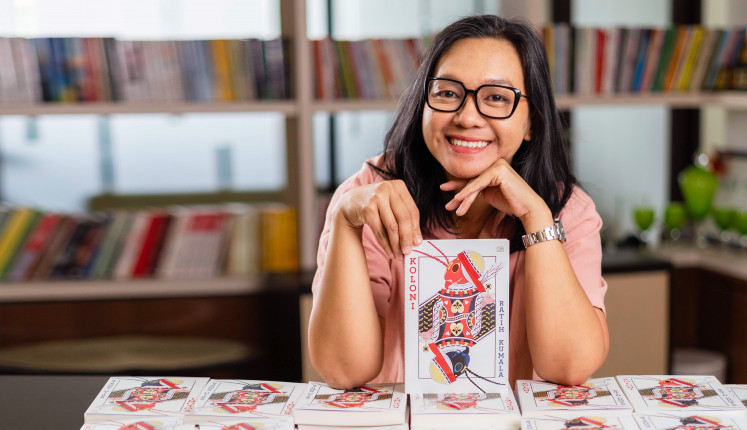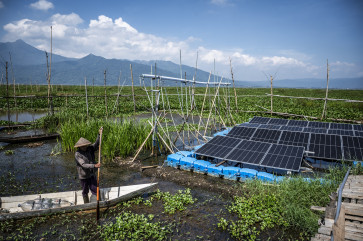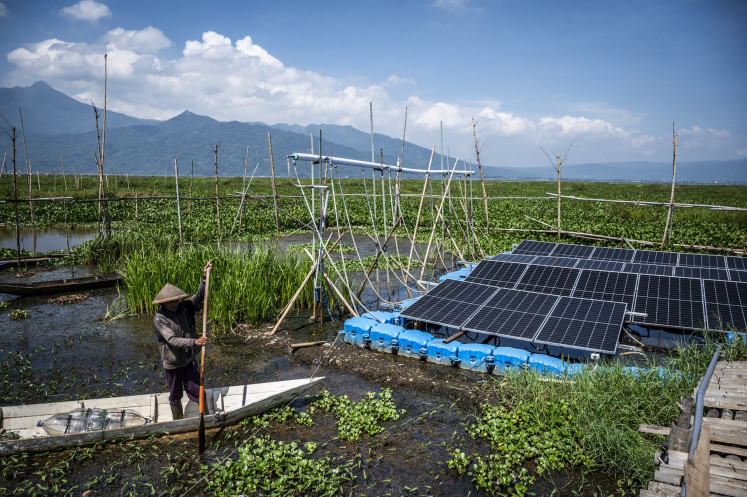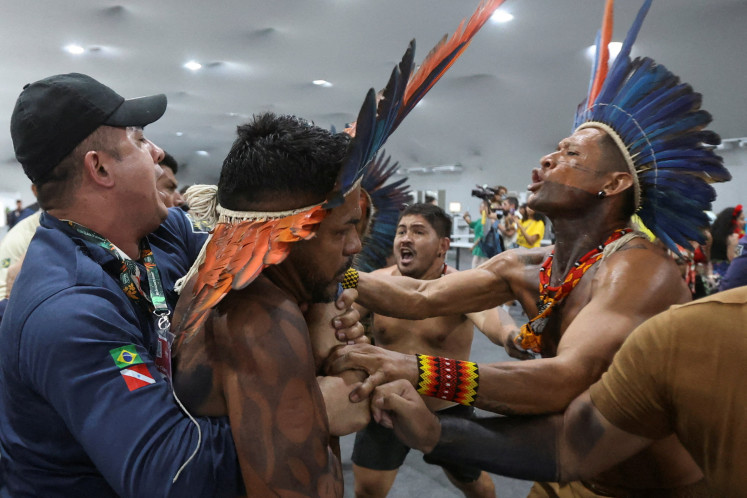Popular Reads
Top Results
Can't find what you're looking for?
View all search resultsPopular Reads
Top Results
Can't find what you're looking for?
View all search resultsSaving ' and selling ' the family jewels in Kapaus Hulu
Tak Saaâ: Beads are one of the most precious possessions of a Dayak and are also a symbol of social status
Change text size
Gift Premium Articles
to Anyone
 Tak Saaâ:: Beads are one of the most precious possessions of a Dayak and are also a symbol of social status." height="341" width="512" border="0">Tak Saaâ: Beads are one of the most precious possessions of a Dayak and are also a symbol of social status.
Tak Saaâ:: Beads are one of the most precious possessions of a Dayak and are also a symbol of social status." height="341" width="512" border="0">Tak Saaâ: Beads are one of the most precious possessions of a Dayak and are also a symbol of social status.An elderly woman â a Hippie, or descendant of the nobility of the Dayak Kayaan Mendalaam ethnic group in Kapuas Hulu, West Kalimantan â was busy stringing beads during a dange harvest thanksgiving festival.
Meanwhile, another elder of the community, Sigo, 76, scrutinized the beads he was working with.
He suddenly pointed to one at the tip of his adorned string, which is typically used as a necklace. âNow, this is called a Buaa Waang Bataang Umaaâ. This bead is special because itâs worth the price of a long house and a very rare family heirloom,â he said.
Tak Saa': Beads are one of the most precious possessions of a Dayak and are also a symbol of social status. An elderly woman ' a Hippie, or descendant of the nobility of the Dayak Kayaan Mendalaam ethnic group in Kapuas Hulu, West Kalimantan ' was busy stringing beads during a dange harvest thanksgiving festival. Buaa Waang Bataang Umaa':: In Kalimantan, antique beads play an important traditional role for members of the Dayak ethic community. (Bambang Bider) According to Sigo, Buaa Waang Bataang Umaa' beads can only be held by the leaders of traditional long houses. They were even used as an instrument to redeem ulun, or slaves. 'There may be only two other beads of this type left in Mendalam that are kept as family valuables.' Beads are a mark of identity, despite their increasing rarity, and gain importance as they are are handed down over generations.
Meanwhile, another elder of the community, Sigo, 76, scrutinized the beads he was working with.
He suddenly pointed to one at the tip of his adorned string, which is typically used as a necklace. 'Now, this is called a Buaa Waang Bataang Umaa'. This bead is special because it's worth the price of a long house and a very rare family heirloom,' he said.
Valentinus Aem, 72, is a Dayak Kayaan Mendalam community elder in Kapuas Hulu. He said that beads are one of the most precious possessions of a Dayak and are also a symbol of social status.
Beads, as a part of Dayak Kayaan Mendalaam culture, have typically been used for dowries, as religious objects and as ornaments. They are indispensable items at festivals and customary rituals. Buaa Waang Bataang Umaa' beads even once functioned as a means of exchange.
'Buaa Waang Bataang Umaa' beads are a favorite of Hippie noblemen and they're very rare, because of their very high price ' as expensive as a long house,' Aem said.
In Kalimantan, antique beads play an important traditional role for members of the Dayak ethic communities that live deep in the island's interior.
Beads are typically made of various materials, including oyster shells, bone, ivory, wood, resin, seeds, red coral, terracotta, metal, glass and stones. Those that are colored dark blue are particularly prized.
In West Kalimantan, beads were a prized product when merchants from Europe, Asia and big kingdoms like Banten arrived on the scene.
John Saris, an English captain from the early 17th century, said that Chinese living in Banten made glass beads and sold them to Sukadana, Ketapang, according to a book published by Sumarah Adhyatman.
However, the practice of handing down beads of great value is rare these days: Antique traders make people offers they cannot refuse, reselling the items to collectors. Only certain noble or rich people can hold onto the 'family jewels'.
Most beads used to adorn traditional costumes are relatively new. Dayak people use beads to decorate the robes and necklaces of shamans and to place on the lips of the dead before burial.
Your Opinion Matters
Share your experiences, suggestions, and any issues you've encountered on The Jakarta Post. We're here to listen.
Thank You
Thank you for sharing your thoughts. We appreciate your feedback.
Share options
Quickly share this news with your network—keep everyone informed with just a single click!
Gift Premium Articles
to Anyone
Share the best of The Jakarta Post with friends, family, or colleagues. As a subscriber, you can gift 3 to 5 articles each month that anyone can read—no subscription needed!
Continue in the app
Get the best experience—faster access, exclusive features, and a seamless way to stay updated.










